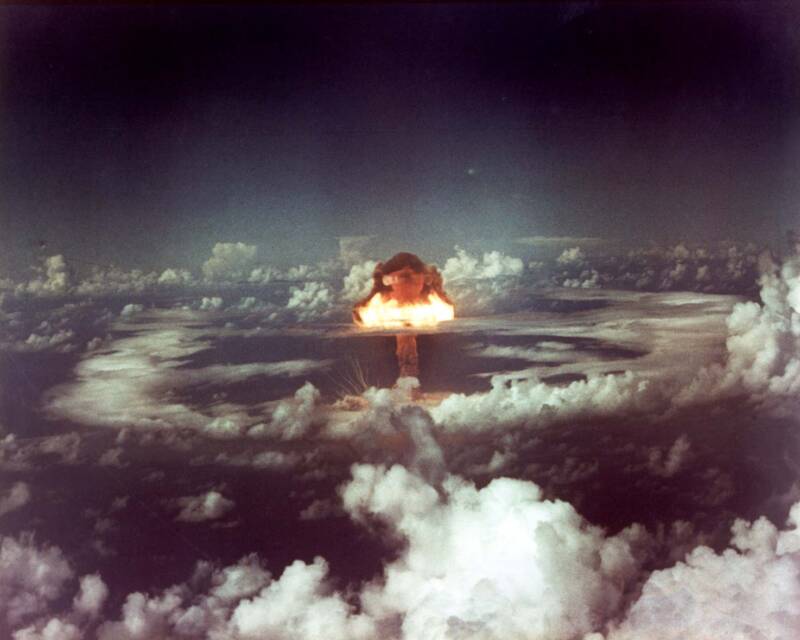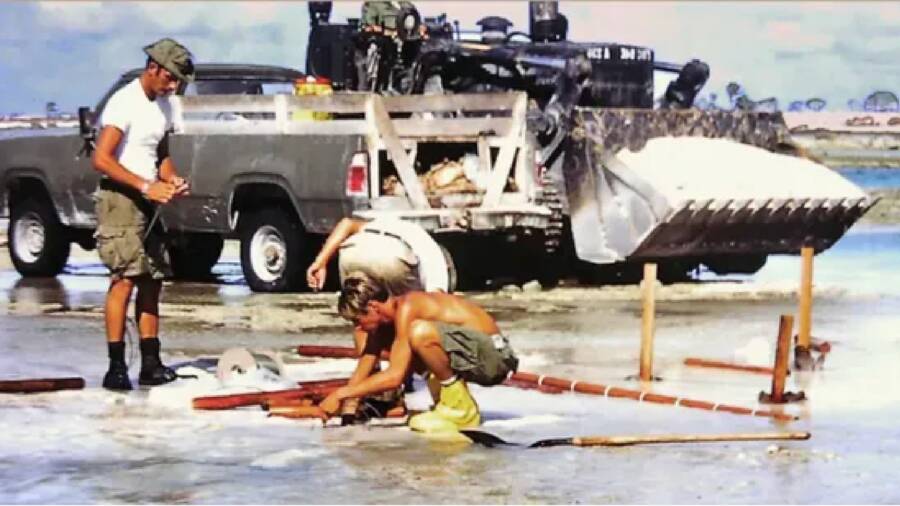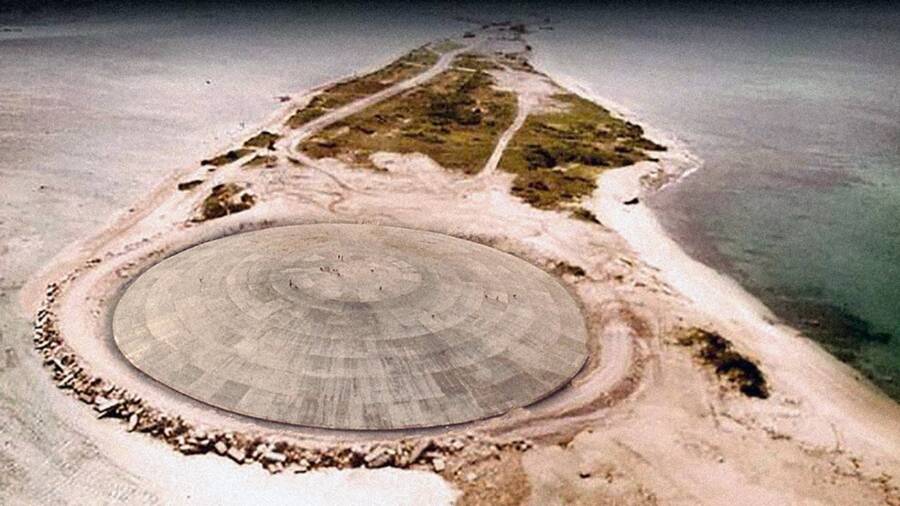The Runit Dome, also called the Tomb, is a 115 m (377 ft) diameter, 46 cm (18 in) thick dome of concrete at sea level, encapsulating an estimated 73,000 m3 of radioactive debris, including some plutonium-239.
Introduction to the Runit Dome
The Runit Dome, a relic of the Cold War era, now sits ominously among the picturesque landscapes of the Marshall Islands, a nation in the Pacific Ocean, strategically positioned between Hawaii and the Philippines.

Constructed between 1977 and 1980, this massive concrete structure, also known as the Cactus Dome or “The Tomb,” was intended to safely contain the radioactive waste left from the numerous nuclear tests conducted by the United States. However, as the dome begins to show signs of deterioration, the safety it was supposed to guarantee is under threat.
The Marshall Islands as a U.S. Nuclear Test Site
The Beginning of Nuclear Trials
In the mid-20th century, the Marshall Islands were deemed an ideal location for nuclear testing by the U.S. government due to its sparse population and remote location. This led to the first nuclear detonation in 1946, marking the start of a series of 67 nuclear and atmospheric tests that would scar the atolls of Enewetak and Bikini until 1958.

These tests included the infamous Castle Bravo, the largest hydrogen bomb ever tested by the United States, which was 1,000 times more powerful than the atomic bombs dropped on Hiroshima and Nagasaki.
The Escalation and the Limited Test Ban Treaty
As the Cold War tensions escalated, so did the frequency and magnitude of the tests, peaking in 1958 with 33 bombs tested over a few months. Although the 1963 Limited Test Ban Treaty curtailed atmospheric tests, underground and biological testing continued well into the 1960s.

The Dangerous Construction of The Runit Dome
A Problematic Solution
By the 1970s, the impact of decades of nuclear detonations was evident, with massive craters and extensive radioactive contamination plaguing the islands. The U.S. government, facing pressure and legal threats from the islanders, initiated a clean-up process.

This led to the controversial decision to bury the radioactive debris in a crater on Runit Island, which was then sealed with an 18-inch thick concrete dome. The dome was primarily constructed by U.S. servicemen, who later reported severe health issues from exposure to radioactive materials during the construction process.
The Ongoing Danger of ‘The Tomb’
A Lingering Threat
Today, the Runit Dome stands as a grim reminder of the past atrocities of nuclear testing. The structure not only encapsulates the radioactive waste but also the turbulent history of exploitation of the Marshallese people.
With the dome’s integrity compromised by cracks and the looming threat of climate change-induced storms, the potential for a catastrophic release of radioactive material into the Pacific Ocean increases, posing an existential threat to the local communities and the marine environment.

Voices from the Past and Present
The story of the Runit Dome is deeply intertwined with the lives of the Marshallese. Individuals like Nerje Joseph, who experienced the horrific Castle Bravo detonation as a child, have lived with the consequences of these tests for decades.
The health impacts and the disruption of the traditional Marshallese way of life are profound and enduring. As global attention to climate change grows, the fate of the Runit Dome and its toxic legacy draws concern from international legal and environmental experts, highlighting the need for urgent action.
Conclusion: A Call for Action and Acknowledgment
The Runit Dome is more than just a structure; it is a symbol of the need for historical accountability and proactive environmental stewardship. As the Marshallese continue to live with the consequences of decisions made half a century ago, the international community’s role in addressing these injustices and preventing further harm becomes ever more critical.
The dome’s story is a stark reminder of the long-lasting impacts of nuclear testing and the complex challenges of remediation in the era of climate change. It underscores the urgency of collective action and the moral imperative to support those who continue to suffer from the legacy of our past actions.




